
This is the Guildford PC User Group web site. If you want more information about the group check out the Membership page, or come to one of our meetings. I would appreciate some input from other members of the group, so if you have written something that other members would find useful, or have a suggestion for the web site, please send it to me.
Previous Meetings
Monday 21st May 2012 - AGM, Microsoft Flight and Cyberlink Media Suite.
Tony started the evening showing the latest flight simulator from Microsoft, simply called Flight. It is a free download from the Microsoft site (approzimately 1GB) but you only get one aircraft and the area of Hawaii to fly in. If you sign into Windows Live you can get additional features or buy them. The graphics look great and the handling is the same as most of the previous flight sims. Tony then took a flight from London and flew over the River Thames, going through Tower Bridge. You will need a good broadband connection and be wary of any data limits you have to get the game and additional contents.
Tony then went on to show details of Cyberlink's new Media Suite, which includes Power DVD 12, Power Director 10, Power2Go 8, Media Show 6 and other software for converting media or editing sound files. He tried to show how to edit a video but couldn't play any sound for the clip he imported. He was much more comfortable with Pinnacle Studio HD, but then he has been using that program for a while. Finally he showed Power DVD 12 which can play Blu-Ray and 3D Blu-Ray as well as DVDs, if you have the appropriate drive and display.
We then went on to the Annual General Meeting, which we sadly decided that we could no longer meet at the Stoughton Youth Club and Community Centre. The cost of hiring the hall for the evening is getting too high, especially considering the number of members we have. As treasurer, Francis showed the latest income and expenditure figures which showed we would be in the red after paying for the current meeting. It was agreed that we would try to find an alternative location to meet at, possibly in Fleet, and reduce the meetings to just three a year. Until we have found a new location there will be no more meetings. Tony found one of the first issues of ROM that he produced from back in 1994, when it was sent out to over 60 members. With membership down to just about double figures and ROM only available as a download, times have changed. I hope that we will be able to meet up again, but if not, it has been a pleasure to know all the members of the group and been great fun giving talks at the meetings.
Monday 12th March 2012 - Team Viewer and Photo Director 3
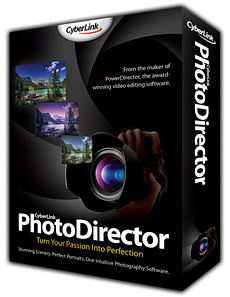 The meeting didn't get off to a good start as the monitor connection
socket was broken. However, the router that gives the wireless access to the internet had been
completely reset, with a default name, no password and no working internet connection. This meant Laurence could not demonstrate Team Viewer, which allows remote
control of another PC over the internet. He did his best to explain the program without using it.
The meeting didn't get off to a good start as the monitor connection
socket was broken. However, the router that gives the wireless access to the internet had been
completely reset, with a default name, no password and no working internet connection. This meant Laurence could not demonstrate Team Viewer, which allows remote
control of another PC over the internet. He did his best to explain the program without using it.
He then went on to show Cyberlink's Photo Director 3, which manages your photos and allows you to adjustment, create a slideshow or print them out. The library feature has too many options to catalogue your photos, and doesn't account for new additions to a folder wihout re-importing them (although it does detect any duplicates). The adjustment features offer a ranges of features, but are not accurate or easy to use. The slideshow feature doesn't allow for much customisation and has a few major bugs in the way it works. Finally the print function can't cope with portrait and landscape pictures on the same page and has limited layout functions. The software isn't that cheap, costing around £115, which is £35 more than the most expensive PaintShop Pro version which can edit and organise your photos. Laurence did his best despite the power, internet and TV problems, not to mention the fact the sofa had been moved so the other members didn't have a comfy seat!
Monday 13th February 2012 - Pure's One Flow Internet Radio
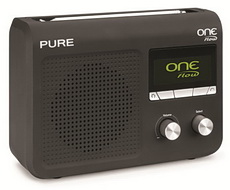 With our first meeting of the new year, Tony showed Pure's One Flow Internet Radio. This radio has DAB radio, FM and internet radio stations and
also has two alarms. It has Flow Songs software installed, so it can identify the song that you are listening to and allow you to buy it and download
the track. You have to sign up to a service on a website and top up your account beforehand, and the tracks cost between 99p to £1.29, which is more
expensive that iTunes or Amazon. It has a nice satin-touch finish but uses an optional ChargePAK E1 rechargeable battery for portable use. The radio
costs around £84, and the battery pack costs around £33. As well as been able to listen to podcasts it has a PURE Sounds feature, with ambient sounds of
different birds or crashing waves.
With our first meeting of the new year, Tony showed Pure's One Flow Internet Radio. This radio has DAB radio, FM and internet radio stations and
also has two alarms. It has Flow Songs software installed, so it can identify the song that you are listening to and allow you to buy it and download
the track. You have to sign up to a service on a website and top up your account beforehand, and the tracks cost between 99p to £1.29, which is more
expensive that iTunes or Amazon. It has a nice satin-touch finish but uses an optional ChargePAK E1 rechargeable battery for portable use. The radio
costs around £84, and the battery pack costs around £33. As well as been able to listen to podcasts it has a PURE Sounds feature, with ambient sounds of
different birds or crashing waves.
Tony then showed Audials One 9, some PC software that can access internet radio as well. Not only does it give you the choice of thousands of internet radio channels, but you can also record any audio you are listening to and save it for later. It can also record any video you are watching from a streaming website or a DVD, but the website promotes this as their Audials' legal re-recording function. If you don't try to decrypt encoded material (i.e. DRM files) or share the recordings with anyone else then it appears to be legal.
Monday 12th December 2011 - Xmas Quiz
The evening started with Tony showing his new laptop, an Acer, with a blu-ray re-writer. Using the HDMI output we saw the high picture quality from two films, Pixar's Up, and The Polar Express. With animated films the detail can be lost when the video compression is used when transferring the film to DVD or blu-ray, but it was not evident here. As there were only two speakers set up Tony couldn't demonstrate the surround sound but it does sound good in the film Up.
We then went on to the Xmas Quiz, which costs £2 for members to enter. The quiz was supposed to be easier this year, but Tony says that every year. Surprisingly the winner, with 12 out of 20 was me (Laurence), with Miles, Francis and Dave tying second with 10 and John was third with 9. The prizes included copies of Norton Antivirus, Crazy Talk 6, Magix Photostory, Nero Move It, NCH Business Essentials Suite, A Guide to Office 2003 and a nifty bluetooth headset for your mobile phone. As most people managed to get three prizes each I'm pretty sure the evening was enjoyed by all.
The Questions (39k)
The Answers (40k)
Monday 14th November 2011 - PaintShop Pro X4/Google Tips
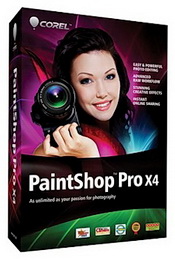 Laurence demonstrated some of the new features of PaintShop Pro X4
including Photo Blend, which is meant to help improve group photos where someone makes a face. He then showed the HDR (High Dynamic Range) exposure merge function,
which results in a dramatic looking image. He finished off with some of the effects, like Vignette and Selective Focus, before showing how the Fill Light/Clarity function
can improve a shot.
Laurence demonstrated some of the new features of PaintShop Pro X4
including Photo Blend, which is meant to help improve group photos where someone makes a face. He then showed the HDR (High Dynamic Range) exposure merge function,
which results in a dramatic looking image. He finished off with some of the effects, like Vignette and Selective Focus, before showing how the Fill Light/Clarity function
can improve a shot.
In the second part of the demo, Laurence showed the many features of searching using Google, showing how to improve the results of a query. There are also the added functions like the Calculator, finding the weather, the time in other countries, conversions, movies times and the quirks such as 'tilt' and searching for Chuck Norris. He ended with the feature in Word 2007 to generate random text to whatever length you require. A hopefully interest talk, but as I gave it, I maybe a bit biased!
Monday 10th October 2011 - Acer Laptop/SSD Drive/Dragon Dictate 11
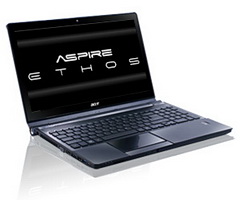 Tony started off showing a new Acer Aspire Ethos laptop that he had on loan. It wasn't the model that he was promised, with a big screen
and blu-ray, but it had an i5 processor 2.3GHz, 8GB of memory and a 750GB hard drive. the case was made of aluminium instead
of the usually plastic, and the keys were lit as well. He showed some of the new restored DVD version of The Sound Of Music,
but that really needs a decent speaker system to do it justice.
Tony started off showing a new Acer Aspire Ethos laptop that he had on loan. It wasn't the model that he was promised, with a big screen
and blu-ray, but it had an i5 processor 2.3GHz, 8GB of memory and a 750GB hard drive. the case was made of aluminium instead
of the usually plastic, and the keys were lit as well. He showed some of the new restored DVD version of The Sound Of Music,
but that really needs a decent speaker system to do it justice.
 He then showed a video of how he installed a 96GB solid state drive into a laptop. An SSD is very fast (Windows 7 boots
in just under 15 seconds) but they can be expensive, at around a dollar (or pound) per gigabyte. The 96GB model Tony had costs between £91-£120. You take the 2.5 inch drive
out of your laptop and put it into the supplied caddy. You install the solid state drive and then use the cloning software to
clone the hard drive (plugged in as an external drive) to the SSD. This can take around half a hour, so that's why Tony made
the video.
He then showed a video of how he installed a 96GB solid state drive into a laptop. An SSD is very fast (Windows 7 boots
in just under 15 seconds) but they can be expensive, at around a dollar (or pound) per gigabyte. The 96GB model Tony had costs between £91-£120. You take the 2.5 inch drive
out of your laptop and put it into the supplied caddy. You install the solid state drive and then use the cloning software to
clone the hard drive (plugged in as an external drive) to the SSD. This can take around half a hour, so that's why Tony made
the video.
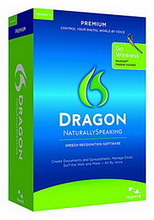 Finally Tony demonstrated Dragon Dictate 11, the latest voice to text software from Naturally Speaking, costing around £150. You usually have to train
the software to recongise your voice, but it seemed to work just as well when Francis had a go with it (and he had never used it
before). It can translate the spoken word to text using one of it's own programs (Dragon Pad, which is a bit like Word Pad) but
you can also use it with Word. You can play back the recording and it will highlight the words as it goes, which makes it easier
for you to correct any mistakes.
Finally Tony demonstrated Dragon Dictate 11, the latest voice to text software from Naturally Speaking, costing around £150. You usually have to train
the software to recongise your voice, but it seemed to work just as well when Francis had a go with it (and he had never used it
before). It can translate the spoken word to text using one of it's own programs (Dragon Pad, which is a bit like Word Pad) but
you can also use it with Word. You can play back the recording and it will highlight the words as it goes, which makes it easier
for you to correct any mistakes.
Monday 12th September 2011 - Sony Vaio 3D Laptop
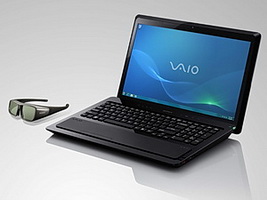 The first meeting after our summer break started with Tony showing us one of Sony's most expensive (around £1700) i7 laptops.
It can show 3D Blu-ray films and comes supplied with one pair of active-shutter 3D glasses. Unfortuantely Tony could not get the
display to work, although it was working fine early that afternoon!
The first meeting after our summer break started with Tony showing us one of Sony's most expensive (around £1700) i7 laptops.
It can show 3D Blu-ray films and comes supplied with one pair of active-shutter 3D glasses. Unfortuantely Tony could not get the
display to work, although it was working fine early that afternoon!
He went on to show his new Panasonic HD camcorder, which uses SD HC cards to record the footage, and comes with a 3D lens adapter. Tony had been to the Proms the other week and had made a short film of his trip (even though they ban the use of any camera inside the Albert Hall). He created this using Pinnacle Studio 15, importing the footage and adding still photos, music and titles. He went through the steps of creating a video using some footage of his grandchildren swimming in his pool. As with most video editing programs, there were many transistion effects available but most professionals only use a simple cut or fade. The only film series I know of that uses a fancy wipe is George Lucas' Star Wars films. If you don't have any music to add to the background of your film, you can use the SmartSound music which is listed by the type and style of music. This creates music 'on the fly' and has the advantage of fitting the length of the clip no matter how low or short it is. If you add another scene to your movie, you can just stretch the music and it will be recomposed to fit.
Monday 13th June 2011 - AGM and Lexmark Genesis S815 Scanner/Printer
The members of the board gave their reports, and then stood down. All three were re-elected. The subs are to remain at £20, but as the rent for the hall costs £36 per meeting, it was agreed that a cheaper venue (or a renegotiation on the price) really should be found. Anyone with details of a location close to where we meet should send the info to our Chairman/Editor, Tony, at his email address. Laurence reminded members that the website could do with some input from other members, and that the domain was renewed for two years just recently.
Tony then went on to show the Lexmark Genesis S815 Scanner/Printer. This device has a touch screen and instead of a traditional scanner uses a 10 megapixel camera to 'scan' the items in a tray accessed by pulling down the front of the screen. Multiple documents can be printed double sided and magazine can be scanned it they are not too thick. The quality of photos printed were not as good as expected, but this could have been down to the paper used. The printer uses a black and three colour cartirdges, which costs £14, but Tony could not say how many pages one set of cartridges could print. Items could be scanned and sent to a PDF or Word (as an RTF file) and the device can be set up to be used wirelessly with its built in wifi adapter. It also has a Pictbridge connection port, as well as an SD card slot. As the scanning resolution cannot be changed you can't use the scanning functions to enlarge an image but for everyday use it seems easy to use. The Genesis S815 costs £299 from Lexmark, but only £178 from Amazon.
Monday 9th May 2011 - Creating Music on your PC
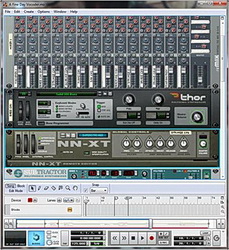 This will be a bit odd as I'm writing a review of the talk I gave at the club meeting!
Laurence has been creating music since 1984, and showed some of his earlier work on a BBC Micro emulator. He followed with a history of the sound card, playing the same
music on each of the devices. After clarifying some of the terms used he showed the software you can use to create music, from Dance eJay (£20), n-Track Studio (£40)
to Reason 5 (£226). After a demo of a piece using a classical track as it's basis in n-Track Studio, he showed how easy it was to record your music using a MIDI keyboard (in this case
a Casio CZ-101), a £6 MIDI to USB adapter and the software. By recording a few bars on a lopp using quantising, you can easily build up a song and change the sounds with a few clicks.
He also showed the more traditional sheet music way to record your songs, using Sibelius 6 and PhotoScore (to scan in the music).
This will be a bit odd as I'm writing a review of the talk I gave at the club meeting!
Laurence has been creating music since 1984, and showed some of his earlier work on a BBC Micro emulator. He followed with a history of the sound card, playing the same
music on each of the devices. After clarifying some of the terms used he showed the software you can use to create music, from Dance eJay (£20), n-Track Studio (£40)
to Reason 5 (£226). After a demo of a piece using a classical track as it's basis in n-Track Studio, he showed how easy it was to record your music using a MIDI keyboard (in this case
a Casio CZ-101), a £6 MIDI to USB adapter and the software. By recording a few bars on a lopp using quantising, you can easily build up a song and change the sounds with a few clicks.
He also showed the more traditional sheet music way to record your songs, using Sibelius 6 and PhotoScore (to scan in the music).
The hardware needed, a MIDI adapter and a MIDI keyboard is fairly cheap, at around £86 for the two, but the expensive part is the software itself. Most of them have a trial version available to download but there a few freewware music programs if you search for them. Getting additional sounds, like VST plugins or ReFill packs can cost a fair bit as well. For example, the Abbey Road Keyboards ReFill for Reason, which gives you vintage sounds from the famous recording studios, costs around £130. A hopefully enjoyable evening, and below are some mp3 files of the songs featured in the talk.
Chuckie B (MIDI File)
Chuckie B (arranged in Reason 5)
Dance (MIDI File)
Dance (arranged in Reason 5)
T.I.M. - Palladio Film (created in n-Track Studio)
T.I.M. - Cantaloop (example of Soundfonts)
T.I.M. - Sphere Two (example of Dance eJay
If you have QuickTime installed, you can compare the difference between it's own synthesiser and the Microsoft one. Play a MIDI file in in the QuickTime player and then play the same file in Media Player and see if you can hear the difference.
Monday 11th April 2011 - XBox 360 and Kinect
 The meeting was a little different to normal, as Tony's grandchildren,
Ben and Sam came along to demonstrate the Kinect add on for the Xbox 360. This is a camera, microphone and infrared sensor that allows you to play games on
the Xbox 360 by just moving your body. Unlike the Wii and the PS3 controllers you don't have to hold anything. The Kinect does need to be calibrated before
you play any game, but this is fairly quick to do. Ben started with hangliding on the Motion Sports game. You also have soccer, boxing, skiing, and American
football and his brother Sam then showed the penalty shoot out where you take a penalty and then become the goalkeeper. Ben then showed the downhill slalom
skiing which he was quite good at as he had just come back from a real skiing holiday.
The meeting was a little different to normal, as Tony's grandchildren,
Ben and Sam came along to demonstrate the Kinect add on for the Xbox 360. This is a camera, microphone and infrared sensor that allows you to play games on
the Xbox 360 by just moving your body. Unlike the Wii and the PS3 controllers you don't have to hold anything. The Kinect does need to be calibrated before
you play any game, but this is fairly quick to do. Ben started with hangliding on the Motion Sports game. You also have soccer, boxing, skiing, and American
football and his brother Sam then showed the penalty shoot out where you take a penalty and then become the goalkeeper. Ben then showed the downhill slalom
skiing which he was quite good at as he had just come back from a real skiing holiday.
The evening was finished off with Fifa 2010, one of the older Xbox 360 games which unfortunately does not work with the Kinect. Instead you use the wireless controller which has a multitude of buttons to control your player on screen and enable him to pass and kick. The boys certainly know their games (and their football) and are competitive. As they had to get home it wasn't possible for the other club members to try any of the games but it showed how easy it was to play the games with the Kinect device. The sensor costs around £100 and comes with one game, or you can get it as part of a bundle with the XBox 360 for £290.
Monday 14th March 2011 - Hallmark Card Studio Deluxe
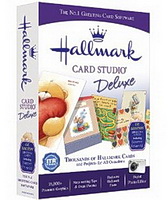 Tony gave a brief demonstration of Hallmark's latest Card Studio software. It can create all types of cards, calendars, invitations, etc. from it's 16,000 graphics, which
took over an hour to install. He showed how easy it was to pick a design and customise the card, adding your own text and pictures. The initial designa are "a bit cheesy
and Americanised" to quote Tony, but look good when printed out. You can use special greeting card paper with envelopes, which you can get from places like WHSmiths, although
they only seem to stock A5 cards which fold to an A6. You can get a package of the software and 20 greeting card paper sheets and envelopes for about £24 from Amazon, or just the
software for £15. Tony did remark on how the software seemed a little slugish on his laptop (and that's not due to the speed of the laptop itself) but despite this it can
produce quality cards that are alot cheaper than shop bought ones.
Tony gave a brief demonstration of Hallmark's latest Card Studio software. It can create all types of cards, calendars, invitations, etc. from it's 16,000 graphics, which
took over an hour to install. He showed how easy it was to pick a design and customise the card, adding your own text and pictures. The initial designa are "a bit cheesy
and Americanised" to quote Tony, but look good when printed out. You can use special greeting card paper with envelopes, which you can get from places like WHSmiths, although
they only seem to stock A5 cards which fold to an A6. You can get a package of the software and 20 greeting card paper sheets and envelopes for about £24 from Amazon, or just the
software for £15. Tony did remark on how the software seemed a little slugish on his laptop (and that's not due to the speed of the laptop itself) but despite this it can
produce quality cards that are alot cheaper than shop bought ones.
Monday 14th February 2011 - Is a Mac Better?
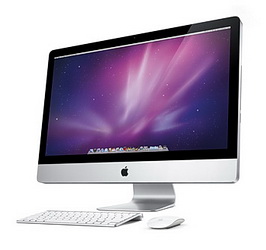 In our first meeting after the Christmas break, John Childs talked about Apple Mac computers. He had a 15 inch MacBook Pro Intel Core Duo laptop (starting price £1530)
but his pride and joy was a 27 inch iMac quad core desktop (custom made, £1950). Both run OS X (Snow Leopard), based on a Unix core, which was upgraded for around £40 for five computers. The iMac
uses a wireless keyboard and mouse (with no physical buttons on top, but functionally they are there) and has a built in DVD drive and several USB ports around the back. The built in
speakers are better than the ones you get on a laptop but the monitor only comes in a gloss format whereas the laptop can have a matt finish. John showed the ins and outs of
the OS and the bundled programs, and although Apple have their version of Office/Works, called iWorks (£60), he uses the freely available Open Office. Microsoft Office is available in Mac format,
as are many programs. John uses Photoshop CS5 (£530) for his photography work and Adobe Lightroom to organise his photos. The latter costs £200, but Apple have a program called Aperture
which does the same sort of thing, and costs £44 from their iStore.
In our first meeting after the Christmas break, John Childs talked about Apple Mac computers. He had a 15 inch MacBook Pro Intel Core Duo laptop (starting price £1530)
but his pride and joy was a 27 inch iMac quad core desktop (custom made, £1950). Both run OS X (Snow Leopard), based on a Unix core, which was upgraded for around £40 for five computers. The iMac
uses a wireless keyboard and mouse (with no physical buttons on top, but functionally they are there) and has a built in DVD drive and several USB ports around the back. The built in
speakers are better than the ones you get on a laptop but the monitor only comes in a gloss format whereas the laptop can have a matt finish. John showed the ins and outs of
the OS and the bundled programs, and although Apple have their version of Office/Works, called iWorks (£60), he uses the freely available Open Office. Microsoft Office is available in Mac format,
as are many programs. John uses Photoshop CS5 (£530) for his photography work and Adobe Lightroom to organise his photos. The latter costs £200, but Apple have a program called Aperture
which does the same sort of thing, and costs £44 from their iStore.
John showed that you can dual boot between the Mac OS and Windows XP using Boot Camp, but with VMWare Fusion 3 (around £70) you can run a Windows OS in a window, much like Microsoft's Virtual PC. He also explained how you don't really need anti virus software as system files are protected and the OS is more secure, but as the majority of computers are PC based, hackers haven't bothered to write a virus for the Mac, yet. There's no denying that Macs look very good and the OS is slick, but the hardware is expensive. A PC equivalent of John's iMac is a Sigma Plus all in one, £960 from Novatech. This has a 24 inch monitor, half the memory (4GB), dual core (not quad core), wireless keyboard and mouse, Windows 7 Home Premium and a touch screen (something Apple doesn't do with their large monitors). It doesn't look aa good at John's Mac, but costs less than half of the price. Build quality for Macs is second to none, with a good design and a operating system that really works (I'm quoting from John here!). An interesting evening.
Next Meeting

Latest ROM newsletter

Previous ROM newsletters

There's an archive of the previous editions of the ROM newsletter available.


